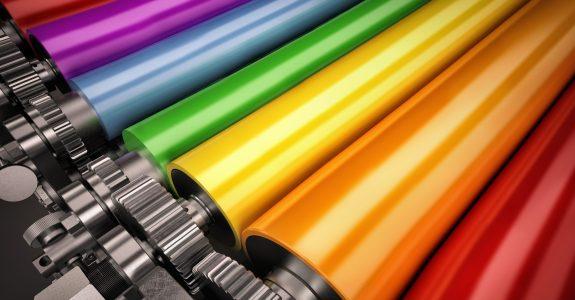Got questions? You’re in the right place! We’ve gathered answers to the things people ask us most often. Take a look below – and if you don’t see what you need, reach out and we’ll get back to you as soon as we can.
Polyethylene Terephthalate (PET) is commonly referred to as Polyester. The PET films have good stiffness with high dimensional and temperature stability. They are bi-axially oriented during manufacturing process which develops a very high tensile strength. Proprietary top coatings are required to achieve good printer image quality and limit static buildup. PET is an ideal base material for laser printing being largely unaffected by the high fuser temperatures in some printers. PET’s are unaffected by most common solvents. They are relatively inert and as such benign to the environment after disposal.
Yes and No. Previously it was known as HydroPrint but has been renamed to KernowPrint.
Yes – KernowPrint is the most tested, most trusted, most OEM certified synthetic, and compatible with numerous dry toner copiers and printers including Xerox, Ricoh, Konica/Minolta, Canon, and Kodak. KernowPrint is also HP Indigo compatible.
Yes they can. Scoring techniques such as Press Score, Rotary Score, or Die Score are suitable. The depth of the score should be 20% of the thickness of the media. Thinner films can be folded using standard folding equipment, but it will have more bounce back than paper because it has no grain and is denser. Thicker films may require systems that can apply heat and/or scoring (after printing) to create an effective fold.
KernowPrint can be guillotine cut using a blade that is sharp and free of nicks. When die cutting, dies should be hardened steel and also sharp and free of nicks. Right angle cuts should be made with a 1.6mm or 1/16th inch radius hole. Laser die cutting is not recommended
Yes it is – KernowPrint is alcohol, water, chemical, and scuff resistant. It does not need to be laminated or varnished.
Permanent Adhesive – intended to stay for the life of the product. This type of adhesive is a strong, long term bond. Good for general purpose use. (Drum Labels, Shampoo Labels, Shipping Containers).
Removable Adhesive – intended for repositionable applications. This type of adhesive provides moderate adhesion for long term use but removes cleanly. (Bus Poster, Bumper Stickers and Shelf Marking).
Low Tack Adhesive – intended for repositionable applications. This type of adhesive provides a ‘cling-like’ adhesive and removes cleanly. (Window Graphics and Counter Signage).
Marine Grade – BS5609 compliant for oil drum labels, chemical and container labelling.
18 months after delivery (under recommended storage conditions)
Yes we can – we have two machines which are capable of producing a variety of pre-perforated material using custom tools, plus we have a large library of tools already available. We can also help and advise on the design of your custom tool. Tool sizes are A5, A4, A3, SRA3, 8 ½ x 11”, or 12 x 18”, and any design can be discussed. We create pre-cut adhesive labels, pre-perforated designs such as luggage tags, door hangers, ID badges, and pre-creased material for menus and brochures. There are endless possibilities, please contact us to discuss.
Media must be acclimated in the original sealed package at the printer environment for 24 to 48 hours before use. Any unused media should be stored in the original box.
For optimum image quality and reliability, maintain printer room Relative Humidity at 40% or higher. Printer room Relative Humidity of 40-45% may require transfer and fusing adjustments for best image quality results. Printer Room Relative Humidity conditions of less than 40% are not recommended.
A 1-inch margin on both the trail and lead edge of the sheet is recommended; however a 2-inch margin may be required to eliminate the occurrence of Edge Deletion Artifacts when printing 3 and 4 color process colors.
Printer setting recommendations are intended to be ‘starting point’ target values that may have to be adjusted depending on printer room %RH, artwork composition and/or printer condition to obtain optimum image quality.
When consecutively printing more than 1000 sheets it may be necessary to run plain paper that is the same size as the synthetic media every 500 sheets in order to clean residual fuser oil from the fuser section for printers that use fuser oil. Please check with your service representative to determine if this is required.
We recommend trying a sample before purchasing significant quantities.
KernowPrint is a pure synthetic being recycled as a category 7 or category 1 polymer, depending on local regulation and availability.
Yes. Oxidative and UV inks formulated for use on plastics are compatible. Laser safe inks are recommended if the preprinted stock is to be run in xerography. When using oxidative inks, limited use of drying powder is recommended. Limit ink coverage in areas to be laser imaged. Maintain a minimum of 45% press room relative humidity.
Jamming of synthetic labels is most often caused by static build-up.
All KernowPrint labels have an anti-static coating on the back of the liner to address this issue.
However, because of the ultra-smooth surface of clear film, it is more susceptible to static and instances of jamming.
Maintaining humidity at 45% or greater will help. Other suggestions include fanning the stock prior to running, selecting the shortest print path, and employing any additional anti-static measures available including tinsel or anti-stat bars.
With more than 50 years of experience developing world-class synthetics for the print market, Kernow Coatings has taken pride in a long history of quality, precision, and innovation built into every one of our products. Creating the best materials in the world is not only our mission, it is our heritage.
